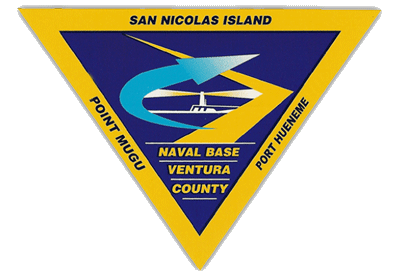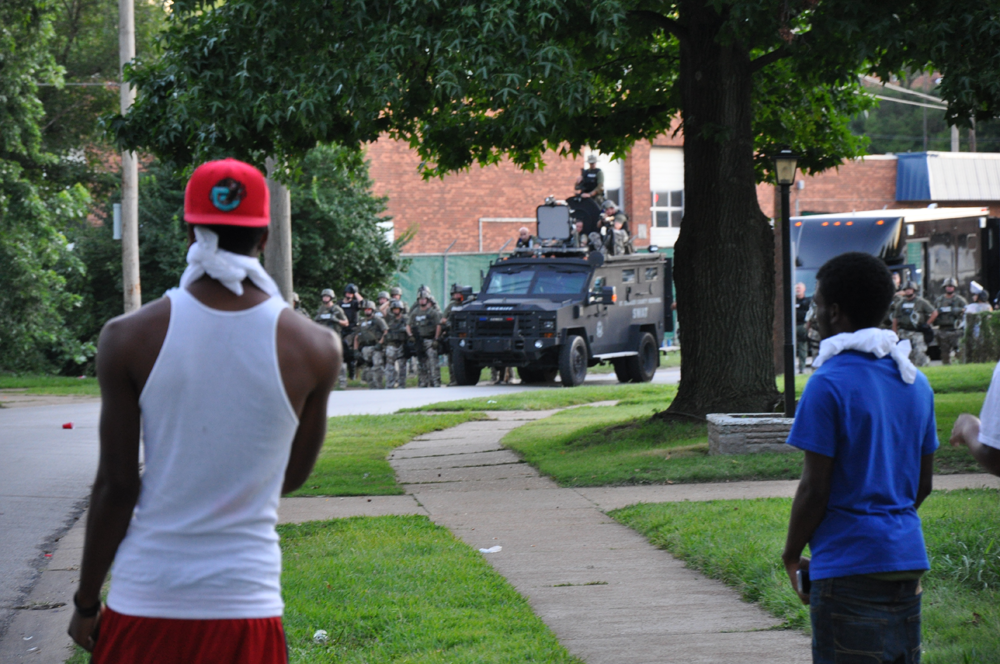|
Naval Surface Warfare Center Port Hueneme
Naval Surface Warfare Center, Port Hueneme Division (NSWC PHD) is a tenant command located at Naval Base Ventura County in Port Hueneme, California and is a component of the United States Navy's Naval Sea Systems Command (NAVSEA). In addition to its primary location at Port Hueneme, the division operates detachments at White Sands, New Mexico; Virginia Beach, Virginia; and Louisville, Kentucky. History NSWC PHD was founded in 1963 as the Naval Ship Missile Systems Engineering Station. It was established to provide overall technical support for the new guided missiles—RIM-2 Terrier, RIM-8 Talos and RIM-24 Tartar—that were being introduced into the naval fleet. Port Hueneme was chosen as the site for this operation because of its deep water port, its proximity to the US Navy’s missile testing range at Point Mugu, California and the availability of space at the already operating Naval Construction Battalion Center Port Hueneme. Chartered as an In-Service Engineering Agent ... [...More Info...] [...Related Items...] OR: [Wikipedia] [Google] [Baidu] |
Naval Base Ventura County
Naval Base Ventura County (NBVC) is a United States Navy base in Ventura County, California. Formed by the merger of NAS Point Mugu and CBC Port Hueneme, NBVC is a diverse installation composed of three main locations — Point Mugu, Port Hueneme, and San Nicolas Island. The base serves as an all-in-one mobilization site, deep water port, railhead, and airfield. NBVC supports more than 100 tenant commands with a base population of more than 19,000 personnel, making it the largest employer in Ventura County. History Naval Construction Battalion Center Port Hueneme The facility at Port Hueneme was built as a temporary depot in the early days of World War II to train, stage, and supply the newly created Seabees (from "C.B.", the initials for "Construction Battalion"). The base was officially established and began operating May 18, 1942 as the Advance Base Depot. In 1945 the Advance Base Depot was renamed the Naval Construction Battalion Center. During the Korean War, almost ... [...More Info...] [...Related Items...] OR: [Wikipedia] [Google] [Baidu] |
Naval Construction Battalion Center Port Hueneme
Naval Construction Battalion Center Port Hueneme, operated as an independent base from 1942 to 2000 as the West Coast home port of the Navy’s Construction Battalions. In 2000, the CBC merged with nearby Naval Air Station Point Mugu to form Naval Base Ventura County. History "1942: The start of the Second World War sent naval survey teams up and down the Pacific coast looking for new locations for naval facilities. One team was looking for a site to build a naval base to support naval construction activities at advanced bases in the Pacific. The team came to Port Hueneme, California and recognized it as an ideal port, because it was the only Pacific deep water port between Los Angeles and San Francisco. Word of the discovery was sent to Admiral Ben Moreell, Chief of the Bureau of Yards and Docks, who was busily putting together the new construction battalions. Port Hueneme therefore was tentatively selected as the site for the advanced base depot on the Pacific coast. On Februa ... [...More Info...] [...Related Items...] OR: [Wikipedia] [Google] [Baidu] |
Systems Command Installations Of The United States Navy
A system is a group of interacting or interrelated elements that act according to a set of rules to form a unified whole. A system, surrounded and influenced by its environment, is described by its boundaries, structure and purpose and expressed in its functioning. Systems are the subjects of study of systems theory and other systems sciences. Systems have several common properties and characteristics, including structure, function(s), behavior and interconnectivity. Etymology The term ''system'' comes from the Latin word ''systēma'', in turn from Greek ''systēma'': "whole concept made of several parts or members, system", literary "composition"."σύστημα" Henry George Liddell, Robert Scott, '' |
Naval Surface Warfare Center Port Hueneme Division, Virginia Beach Detachment
Naval Surface Warfare Center, Port Hueneme Division (NSWC PHD) is a tenant command located at Naval Base Ventura County in Port Hueneme, California and is a component of the United States Navy's Naval Sea Systems Command (NAVSEA). In addition to its primary location at Port Hueneme, the division operates detachments at White Sands, New Mexico; Virginia Beach, Virginia; and Louisville, Kentucky. History NSWC PHD was founded in 1963 as the Naval Ship Missile Systems Engineering Station. It was established to provide overall technical support for the new guided missiles—RIM-2 Terrier, RIM-8 Talos and RIM-24 Tartar—that were being introduced into the naval fleet. Port Hueneme was chosen as the site for this operation because of its deep water port, its proximity to the US Navy’s missile testing range at Point Mugu, California and the availability of space at the already operating Naval Construction Battalion Center Port Hueneme. Chartered as an In-Service Engineering Agent, ... [...More Info...] [...Related Items...] OR: [Wikipedia] [Google] [Baidu] |
Naval Surface Warfare Center
* A Naval Surface Warfare Center (NSWC) is part of the Naval Sea Systems Command (NAVSEA) operated by the United States Navy. NAVSEA Warfare Centers supply the technical operations, people, technology, engineering services and products needed to equip and support the Fleet and meet the warfighter's needs. The Warfare Centers are the Navy's principal Research, Development, Test and Evaluation (RDT&E) assessment activity for surface ship and submarine systems and subsystems. Additionally, the Warfare Centers provide depot maintenance and In-Service Engineering support to ensure that the systems fielded today perform consistently and reliably in the future. NAVSEA currently operates eight Surface Warfare Centers; * NSWC Carderock, Maryland * NSWC Corona, California * NSWC Crane, Indiana * NSWC Dahlgren, Virginia * NSWC Indian Head, Maryland * NSWC Panama City, Florida * NSWC Philadelphia, Pennsylvania * NSWC Port Hueneme, California NAVSEA also operates two Undersea ... [...More Info...] [...Related Items...] OR: [Wikipedia] [Google] [Baidu] |
Directed-energy Weapon
A directed-energy weapon (DEW) is a ranged weapon that damages its target with highly focused energy without a solid projectile, including lasers, microwaves, particle beams, and sound beams. Potential applications of this technology include weapons that target anti-personnel weapon, personnel, missile defense, missiles, vehicles, and optical devices."Daily Telegraph, 12th September 2013" ''Golden Eye-style energy beam is developed by Nato scientists'', Oct. 08, 2013"Milsat Magazine, Satnews Daily, June 24th 2009" ''U.S. Navy Laser Versus UAVs... Las ... [...More Info...] [...Related Items...] OR: [Wikipedia] [Google] [Baidu] |
Surface Warfare
Modern naval warfare is divided into four operational areas: surface warfare, air warfare, submarine warfare, and information warfare. Each area comprises specialized platforms and strategies used to exploit tactical advantages unique and inherent to that area. Surface warfare involves surface ships. Description Modern surface warfare dates from the mid-20th century, when surface, air, and submarine warfare components were blended together as a tactical unit to achieve strategic objectives. In US Navy doctrine, the two most important strategic objectives are maritime interdiction, interdiction and sea control. * Interdiction is the process of intercepting an enemy transiting through a location. For example, German naval objectives against United Kingdom, Britain during World War II's Battle of the Atlantic were primarily focused on preventing ships from arriving intact with their cargoes. * Sea control is the dominance of force over a given area that prevents other naval force ... [...More Info...] [...Related Items...] OR: [Wikipedia] [Google] [Baidu] |
Underway Replenishment
Replenishment at sea (RAS) (North Atlantic Treaty Organization/Commonwealth of Nations) or underway replenishment (UNREP) (U.S. Navy) is a method of transferring fuel, munitions, and stores from one ship to another while under way. First developed in the early 20th century it was used extensively by the United States Navy as a logistics support technique in the Pacific theatre of World War II, permitting U.S. carrier task forces to remain at sea indefinitely. History Concept Prior to underway replenishment, coaling stations were the only way to refuel ships far from home. The Royal Navy had an unparalleled global logistics network of coaling stations and the world's largest collier fleet. This capability allowed the Navy to project naval power around the world and far from home ports. This had two disadvantages: the infrastructure was vulnerable to disruption or attack, and its use introduced a predictable pattern to naval operations that an enemy could exploit. Early attempts ... [...More Info...] [...Related Items...] OR: [Wikipedia] [Google] [Baidu] |
Combat
Combat ( French for ''fight'') is a purposeful violent conflict meant to physically harm or kill the opposition. Combat may be armed (using weapons) or unarmed ( not using weapons). Combat is sometimes resorted to as a method of self-defense, or can be used as a tool to impose one's will on others. An instance of combat can be a stand-alone confrontation or a small part of a much larger violent conflict. Instances of combat may also be benign and recreational, as in the cases of combat sports and mock combat. Combat may comply with, or be in violation of local or international laws regarding conflict. Examples of rules include the Geneva Conventions (covering the treatment of people in war), medieval chivalry, the Marquess of Queensberry rules (covering boxing) and several forms of combat sports. Hand-to-hand combat Hand-to-hand combat (melee) is combat at very close range, attacking the opponent with the body ( striking, kicking, strangling, etc.) and/or with a melee we ... [...More Info...] [...Related Items...] OR: [Wikipedia] [Google] [Baidu] |
Guided Missile
In military terminology, a missile is a guided airborne ranged weapon capable of self-propelled flight usually by a jet engine or rocket motor. Missiles are thus also called guided missiles or guided rockets (when a previously unguided rocket is made guided). Missiles have five system components: targeting, guidance system, flight system, engine and warhead. Missiles come in types adapted for different purposes: surface-to-surface and air-to-surface missiles (ballistic, cruise, anti-ship, anti-submarine, anti-tank, etc.), surface-to-air missiles (and anti-ballistic), air-to-air missiles, and anti-satellite weapons. Airborne explosive devices without propulsion are referred to as shells if fired by an artillery piece and bombs if dropped by an aircraft. Unguided jet- or rocket-propelled weapons are usually described as rocket artillery. Historically, the word ''missile'' referred to any projectile that is thrown, shot or propelled towards a target; this usage is ... [...More Info...] [...Related Items...] OR: [Wikipedia] [Google] [Baidu] |
Logistics
Logistics is generally the detailed organization and implementation of a complex operation. In a general business sense, logistics manages the flow of goods between the point of origin and the point of consumption to meet the requirements of customers or corporations. The resources managed in logistics may include tangible goods such as materials, equipment, and supplies, as well as food and other consumable items. In military science, logistics is concerned with maintaining army supply lines while disrupting those of the enemy, since an armed force without resources and transportation is defenseless. Military logistics was already practiced in the ancient world and as the modern military has a significant need for logistics solutions, advanced implementations have been developed. In military logistics, logistics officers manage how and when to move resources to the places they are needed. Logistics management is the part of supply chain management and supply chain engine ... [...More Info...] [...Related Items...] OR: [Wikipedia] [Google] [Baidu] |





